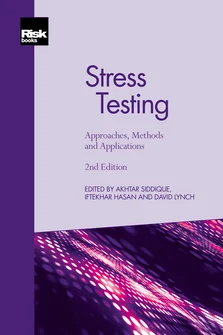Liquidity Risk: The Case of the Brazilian Banking System
Benjamin M Tabak, Solange M Guerra, Sergio Rubens Stancato de Souza and Rodrigo Cesar de Castro Miranda
Foreword
Introduction
Response to Financial Crises: The Development of Stress Testing over Time
Stress Testing and Other Risk Management Tools
Econometric Pitfalls in Stress Testing
Stress-testing applications of Machine Learning Models
Four Years of Concurrent Stress Testing at the Bank of England: Developing the Macroprudential Perspective
Stress Testing for Market Risk
The Evolution of Stress Testing Counterparty Exposures
Liquidity Risk: The Case of the Brazilian Banking System
Operational Risk: An Overview of Stress-testing Methodologies
Peacetime Stress Testing: A Proposal
Stress-test Modelling for Loan Losses and Reserves
A New Framework for Stress Testing Banks’ Corporate Credit Portfolio
EU-wide Stress Test: The Experience of the EBA
Stress Testing Across International Exposures and Activities
The Asset Market Effects of Bank Stress-test Disclosures
An Alternative Approach to Stress Testing a Bank’s Trading Book
Determining the Severity of Macroeconomic Stress Scenarios
Governance over Stress Testing
Stress tests are a widely used tool for risk management of financial institutions. Central banks and individual banks run these tests for determining potential risk sources that they might encounter in scenarios of severe change in the macroeconomic situation and assessing their resilience to such events. By testing themselves, or the financial system as a whole, beyond normal operational capacity, they can quantify vulnerabilities. In addition, the stability of the system or entity can be studied and pursued more easily (Vazquez, Tabak and Souto, 2012).
To design and apply a stress test, many important assumptions should be made. The first step must be to identify the specific risk and vulnerability of concern. In the literature regarding the stress testing of banking risks, the most common type of risks considered are credit, market and liquidity. The majority have focused on assessing credit risk, since this is a bank’s most important risk component. However, liquidity stress testing is gaining in visibility and importance.
Although liquidity crises are not so frequent, their impact are high (low-frequency, high-impact events), especially due to their contagious effects
Copyright Infopro Digital Limited. All rights reserved.
As outlined in our terms and conditions, https://www.infopro-digital.com/terms-and-conditions/subscriptions/ (point 2.4), printing is limited to a single copy.
If you would like to purchase additional rights please email info@risk.net
Copyright Infopro Digital Limited. All rights reserved.
You may share this content using our article tools. As outlined in our terms and conditions, https://www.infopro-digital.com/terms-and-conditions/subscriptions/ (clause 2.4), an Authorised User may only make one copy of the materials for their own personal use. You must also comply with the restrictions in clause 2.5.
If you would like to purchase additional rights please email info@risk.net











